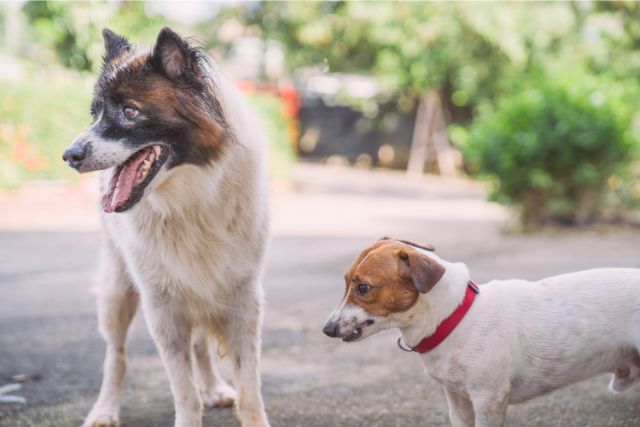If you’re a dog owner, you probably know that dogs can exhibit aggressive behavior from time to time. This can be problematic, especially if your dog’s aggression is directed towards people or other animals. However, with proper management, you can help your dog overcome its aggressive tendencies. In this article, we will explore tips and techniques for managing dog aggression.
Understanding Dog Aggression
Before we dive into the tips and techniques for managing dog aggression, it’s essential to understand the different types of aggression that dogs can exhibit.
Types of Aggression in Dogs
Fear Aggression
Fear aggression is a type of aggression that is triggered when a dog is afraid. This can happen when the dog is exposed to new situations, unfamiliar people, or loud noises.
Resource Guarding Aggression
Resource guarding aggression is when a dog becomes aggressive when it feels that its resources, such as food or toys, are threatened.
Dominance Aggression
Dominance aggression is when a dog tries to assert its dominance over other dogs or people. This can lead to aggressive behavior towards other dogs or people.
Territorial Aggression
Territorial aggression is when a dog becomes aggressive when it feels that its territory is being threatened. This can happen when a stranger enters the dog’s home or yard.
Common Triggers of Dog Aggression
There are several common triggers of dog aggression that you should be aware of:
- Fear and anxiety
- Territorial instincts
- Protective instincts
- Pain or discomfort
- Lack of socialization or training
- Dominance issues
- Resource guarding
Tips and Techniques for Managing Dog Aggression
Now that we have a better understanding of the different types of aggression in dogs and their common triggers, let’s explore some tips and techniques for managing dog aggression.
Tip 1: Identify the Triggers
The first step in managing dog aggression is identifying the triggers that cause your dog to become aggressive. Once you know what triggers your dog’s aggression, you can take steps to avoid or manage those triggers.
Tip 2: Socialize Your Dog
Socialization is essential for preventing dog aggression. Socializing your dog from a young age can help it become more comfortable around people and other animals.
Tip 3: Train Your Dog
Training your dog is another critical aspect of managing aggression. Teaching your dog basic obedience commands, such as sit, stay, and come, can help you control its behavior in stressful situations.
Tip 4: Use Positive Reinforcement
Positive reinforcement is a powerful tool for managing dog aggression. Rewarding your dog for good behavior can encourage it to repeat that behavior in the future.
Tip 5: Manage Your Dog’s Environment
Managing your dog’s environment is crucial for preventing aggression. Keep your dog away from situations or stimuli that trigger its aggressive behavior.
Tip 6: Seek Professional Help
If your dog’s aggression is severe, seeking professional help from a veterinarian or a dog behaviorist is recommended. They can provide you with specialized training and advice on how to manage your dog’s aggression.
Conclusion
Managing dog aggression is essential for keeping your dog and those around it safe. By identifying the triggers of your dog’s aggression, socializing and training your dog, using positive reinforcement, managing your dog’s environment, and seeking professional help when needed, you can help your dog overcome its aggressive tendencies.
FAQs
What causes dog aggression?
Dog aggression can be caused by several factors, including fear, anxiety, territorial instincts, protective instincts, pain or discomfort, lack of socialization or training, dominance issues, and resource guarding.
Is it normal for dogs to show aggression?
It is not uncommon for dogs to exhibit aggressive behavior, but it is essential to manage and address it to prevent harm to people and other animals.
Can dog aggression be cured?
While dog aggression may not be entirely cured, it can be managed and reduced with proper training, socialization, and management.
Should I punish my dog for aggressive behavior?
Punishing your dog for aggressive behavior is not recommended as it can increase the likelihood of future aggression. Instead, focus on positive reinforcement and seeking professional help if needed.
How can I prevent dog aggression?
Preventing dog aggression involves proper socialization from a young age, consistent and positive reinforcement training, and providing adequate exercise and mental stimulation. It is also crucial to understand and recognize your dog’s body language and behavior to intervene and prevent any potential aggression. Seeking professional help and consulting with a veterinarian can also be beneficial in preventing dog aggression.
